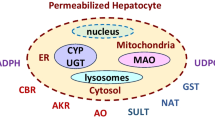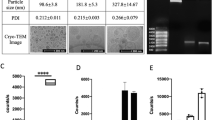Abstract
Background
We isolated the human liver-specific organic anion transporter gene, LST-2 (OATP8/SLCO1B3), which is exclusively expressed in the basolateral membrane of the hepatocytes. In this study, we analyzed the transcriptional regulation of the LST-2 gene in hepatocyte-derived cells and the effect of bile acid.
Methods
Transcriptional activity of the LST-2 gene was measured using a human LST-2 promoter–luciferase reporter plasmid under various concentrations of bile acids. Electrophoresis mobility shift assays of farnesoid X receptor (FXR), hepatocyte nuclear factor (HNF) 1α, and HNF3β were performed.
Results
Luciferase analysis showed that the 5′-flanking region from −180 to −20 bp is responsible for LST-2 transcriptional activity. By site-directed mutation analysis, it was revealed that the consensus binding sites for FXR, HNF1α, and HNF3β play important roles in the transcriptional activity of the LST-2 gene. By electrophoresis mobility shift assay, we observed specific protein–DNA complexes of FXR, HNF1α, and HNF-3β. Luciferase activity was increased fivefold when chenodeoxycholate or deoxycholate were added. Northern blot analyses revealed that the expression of LST-2 was increased by addition of chenodeoxycholate or deoxycholate in a dose-dependent manner.
Conclusions
This study demonstrated that the transcription of the LST-2 gene is regulated by three transcription factors, FXR, HNF1α, and HNF3β. HNF1α and HNF3β might contribute to its liver-specific expression, and FXR might play a role in its transcriptional activation by bile acids.
Similar content being viewed by others
References
B Hagenbuch PJ Meier (2003) ArticleTitleThe superfamily of organic anion transporting polypeptides Biochim Biophys Acta 1609 1–18 Occurrence Handle12507753 Occurrence Handle1:CAS:528:DC%2BD38XpvVais7g%3D Occurrence Handle10.1016/S0005-2736(02)00633-8
PJ Meier B Stieger (2002) ArticleTitleBile salt transporters Annu Rev Physiol 64 635–61 Occurrence Handle11826283 Occurrence Handle1:CAS:528:DC%2BD38XisFGmsbk%3D Occurrence Handle10.1146/annurev.physiol.64.082201.100300
T Abe M Kakyo T Tokui R Nakagomi T Nishio D Nakai et al. (1999) ArticleTitleIdentification of a novel gene family encoding human liver-specific organic anion transporter LST-1 J Biol Chem 274 17159–63 Occurrence Handle10358072 Occurrence Handle1:CAS:528:DyaK1MXjvVGku78%3D Occurrence Handle10.1074/jbc.274.24.17159
T Abe M Unno T Onogawa T Tokui TN Kondo R Nakagomi et al. (2001) ArticleTitleLST-2, a human liver-specific organic anion transporter, determines methotrexate sensitivity in gastrointestinal cancers Gastroenterology 120 1689–99 Occurrence Handle11375950 Occurrence Handle1:CAS:528:DC%2BD3MXkslGku78%3D Occurrence Handle10.1053/gast.2001.24804
GA Kullak-Ublick MG Ismair B Stieger L Landmann R Huber F Pizzagalli et al. (2001) ArticleTitleOrganic anion-transporting polypeptide B (OATP-B) and its functional comparison with three other OATPs of human liver Gastroenterology 120 525–33 Occurrence Handle11159893 Occurrence Handle1:CAS:528:DC%2BD3MXhtlKltbo%3D Occurrence Handle10.1053/gast.2001.21176
J Konig Y Cui AT Nies D Keppler (2000) ArticleTitleLocalization and genomic organization of a new hepatocellular organic anion transporting polypeptide J Biol Chem 275 23161–8 Occurrence Handle10779507 Occurrence Handle1:CAS:528:DC%2BD3cXltlGqtr4%3D Occurrence Handle10.1074/jbc.M001448200
I Tamai J Nezu H Uchino Y Sai A Oku M Shimane et al. (2000) ArticleTitleMolecular identification and characterization of novel members of the human organic anion transporter (OATP) family Biochem Biophys Res Commun 273 251–60 Occurrence Handle10873595 Occurrence Handle1:CAS:528:DC%2BD3cXkt1Kmsrk%3D Occurrence Handle10.1006/bbrc.2000.2922
B Hsiang Y Zhu Z Wang Y Wu V Sasseville WP Yang et al. (1999) ArticleTitleA novel human hepatic organic anion transporting polypeptide (OATP2). Identification of a liver-specific human organic anion transporting polypeptide and identification of rat and human hydroxymethylglutaryl-CoA reductase inhibitor transporters J Biol Chem 274 37161–8 Occurrence Handle10601278 Occurrence Handle1:CAS:528:DC%2BD3cXpsFSr Occurrence Handle10.1074/jbc.274.52.37161
D Jung B Hagenbuch L Gresh M Pontoglio PJ Meier GA Kullak-Ublick (2001) ArticleTitleCharacterization of the human OATP-C (SLC21A6) gene promoter and regulation of liver-specific OATP genes by hepatocyte nuclear factor 1 alpha J Biol Chem 276 37206–14 Occurrence Handle11483603 Occurrence Handle1:CAS:528:DC%2BD3MXns1elur0%3D Occurrence Handle10.1074/jbc.M103988200
D Jung GA Kullak-Ublick (2003) ArticleTitleHepatocyte nuclear factor 1 alpha: a key mediator of the effect of bile acids on gene expression Hepatology 37 622–31 Occurrence Handle12601360 Occurrence Handle1:CAS:528:DC%2BD3sXit1ylt78%3D Occurrence Handle10.1053/jhep.2003.50100
S Cereghini (1996) ArticleTitleLiver-enriched transcription factors and hepatocyte differentiation FASEB J 10 267–82 Occurrence Handle8641560 Occurrence Handle1:CAS:528:DyaK28XhsFOrtLs%3D
Y Hayashi W Wang T Ninomiya H Nagano K Ohta H Itoh (1999) ArticleTitleLiver enriched transcription factors and differentiation of hepatocellular carcinoma Mol Pathol 52 19–24 Occurrence Handle10439834 Occurrence Handle1:CAS:528:DyaK1MXhsFygsrc%3D Occurrence Handle10.1136/mp.52.1.19
FM Rausa Y Tan H Zhou KW Yoo DB Stolz SC Watkins et al. (2000) ArticleTitleElevated levels of hepatocyte nuclear factor 3beta in mouse hepatocytes influence expression of genes involved in bile acid and glucose homeostasis Mol Cell Biol 20 8264–82 Occurrence Handle11027295 Occurrence Handle1:CAS:528:DC%2BD3cXnslOjt7k%3D Occurrence Handle10.1128/MCB.20.21.8264-8282.2000
DQ Shih M Bussen E Sehayek M Ananthanarayanan BL Shneider FJ Suchy et al. (2001) ArticleTitleHepatocyte nuclear factor-1alpha is an essential regulator of bile acid and plasma cholesterol metabolism Nat Genet 27 375–82 Occurrence Handle11279518 Occurrence Handle1:CAS:528:DC%2BD3MXjtFShs7g%3D Occurrence Handle10.1038/86871
DJ Parks SG Blanchard RK Bledsoe G Chandra TG Consler SA Kliewer et al. (1999) ArticleTitleBile acids: natural ligands for an orphan nuclear receptor Science 284 1365–8 Occurrence Handle10334993 Occurrence Handle1:CAS:528:DyaK1MXjs1WhtLw%3D Occurrence Handle10.1126/science.284.5418.1365
BB Knowles CC Howe DP Aden (1980) ArticleTitleHuman hepatocellular carcinoma cell lines secrete the major plasma proteins and hepatitis B surface antigen Science 209 497–9 Occurrence Handle6248960 Occurrence Handle1:CAS:528:DyaL3cXkvFeitb0%3D
AM Pfeifer KE Cole DT Smoot A Weston JD Groopman PG Shields et al. (1993) ArticleTitleSimian virus 40 large tumor antigen-immortalized normal human liver epithelial cells express hepatocyte characteristics and metabolize chemical carcinogens Proc Natl Acad Sci U S A 90 5123–7 Occurrence Handle7685115 Occurrence Handle1:CAS:528:DyaK3sXkvVyltrY%3D Occurrence Handle10.1073/pnas.90.11.5123
JD Dignam RM Lebovitz RG Roeder (1983) ArticleTitleAccurate transcription initiation by RNA polymerase II in a soluble extract from isolated mammalian nuclei Nucleic Acids Res 11 1475–89 Occurrence Handle6828386 Occurrence Handle1:CAS:528:DyaL3sXhslCit74%3D
M Kakyo M Unno T Tokui R Nakagomi T Nishio H Iwasashi et al. (1999) ArticleTitleMolecular characterization and functional regulation of a novel rat liver-specific organic anion transporter rlst-1 Gastroenterology 117 770–5 Occurrence Handle10500057 Occurrence Handle1:CAS:528:DyaK1MXmvVWntb0%3D Occurrence Handle10.1016/S0016-5085(99)70333-1
D Jung M Podvinec UA Meyer DJ Mangelsdorf M Fried PJ Meier et al. (2002) ArticleTitleHuman organic anion transporting polypeptide 8 promoter is transactivated by the farnesoid X receptor/bile acid receptor Gastroenterology 122 1954–66 Occurrence Handle12055601 Occurrence Handle1:CAS:528:DC%2BD38Xlt12gsLs%3D Occurrence Handle10.1053/gast.2002.33583
JY Chiang (2002) ArticleTitleBile acid regulation of gene expression: roles of nuclear hormone receptors Endocr Rev 23 443–63 Occurrence Handle12202460 Occurrence Handle1:CAS:528:DC%2BD38Xnt1WitLs%3D Occurrence Handle10.1210/er.2000-0035
H Wang J Chen K Hollister LC Sowers BM Forman (1999) ArticleTitleEndogenous bile acids are ligands for the nuclear receptor FXR/BAR Mol Cell 3 543–53 Occurrence Handle10360171 Occurrence Handle1:CAS:528:DyaK1MXjslCqurg%3D Occurrence Handle10.1016/S1097-2765(00)80348-2
LA Denson E Sturm W Echevarria TL Zimmerman M Makishima DJ Mangelsdorf et al. (2001) ArticleTitleThe orphan nuclear receptor, shp, mediates bile acid-induced inhibition of the rat bile acid transporter, ntcp Gastroenterology 121 140–7 Occurrence Handle11438503 Occurrence Handle1:CAS:528:DC%2BD3MXlt1ykt7c%3D Occurrence Handle10.1053/gast.2001.25503
M Ananthanarayanan N Balasubramanian M Makishima DJ Mangelsdorf FJ Suchy (2001) ArticleTitleHuman bile salt export pump promoter is transactivated by the farnesoid X receptor/bile acid receptor J Biol Chem 276 28857–65 Occurrence Handle11387316 Occurrence Handle1:CAS:528:DC%2BD3MXlvFSru7k%3D Occurrence Handle10.1074/jbc.M011610200
Author information
Authors and Affiliations
Rights and permissions
About this article
Cite this article
Ohtsuka, H., Abe, T., Onogawa, T. et al. Farnesoid X receptor, hepatocyte nuclear factors 1α and 3β are essential for transcriptional activation of the liver-specific organic anion transporter-2 gene. J Gastroenterol 41, 369–377 (2006). https://doi.org/10.1007/s00535-006-1784-3
Received:
Accepted:
Issue Date:
DOI: https://doi.org/10.1007/s00535-006-1784-3




